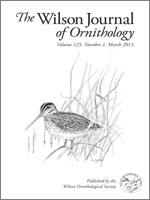Predator-prey interactions occur regularly in nature; however, predation events are difficult to observe in the canopy of tropical rain forests. We describe a successful capture of a Chestnut-mandibled Toucan (Ramphastos swainsonii) by a Collared Forest-Falcon (Micrastur semitorquatus) in Carara National Park, Costa Rica. The predator-prey interaction lasted for ∼30 min from the moment of the first wounding strike in the canopy to the killing of the toucan on the ground. During the predation process, the falcon engaged in multiple attacks from different directions at the sub-canopy level. We video recorded a total of 323.3 sec tracks during the predation event to produce a detailed description of the behavior of both species. In addition, we analyzed the structure of the call of the toucan while being attacked and compared that with a regular call of another individual recorded at a different time in the same area. The toucan produced a distress call with strong harmonics and a broad-band rattling sound as a threatening call. We comment on the possible function of the calls.
How to translate text using browser tools
1 March 2013
Collared Forest-Falcon (Micrastur semitorquatus) Preying on Chestnut-mandibled Toucan (Ramphastos swainsonii) in Costa Rica
J. Edgardo Arévalo,
Marcelo Araya-Salas
ACCESS THE FULL ARTICLE
aggressive displays
Carara National Park
distress calls
prey size
prey-predator interaction
tropical forest





